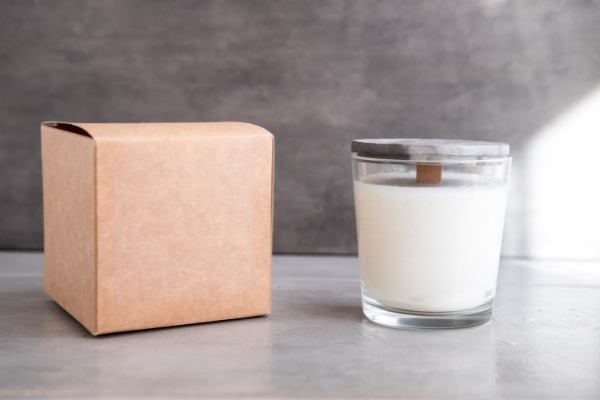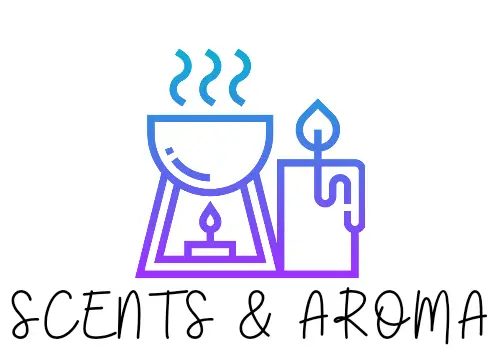With candles, you have a nearly endless selection when it comes to choosing the size, shape, scent, and color that best suits your home decor style. However, did you know that candles can also be made with different types of wax?
Candles have traditionally been made from synthetic waxes, such as paraffin, which burn quickly and contain toxins. However, in recent years, eco-friendly materials have become more popular among both candlemakers and candle buyers.
One of the newest and quickly getting popular ones is palm wax.
Keep reading to discover why palm wax may be the best wax candle for your home.

Are palm wax candles toxic? Palm wax is non-toxic and considered a clean-burning wax. In other words, it does not release cancer-causing chemicals into the air like paraffin wax does when burned. Palm wax poses no health risks to humans. However, the real concern is the impact of wax production on the environment.
If you fancy trying out a palm wax candle for yourself I recommend this beautiful one which come in an amazing lavender scent. I have tried it and it smells absolutely lush.
What is palm wax made from?
Palm wax is derived from the fruit of the palm oil tree, which is typically found in Southeast Asia and South America. The process of farming palm trees can create many jobs in third-world countries because palm oil is a renewable resource that requires a lot of labor to extract and turn into wax.
Candles made from palm wax burn longer and are more cost-effective since it has a high melting point. In addition to being naturally produced, they also burn cleanly and don’t release toxic chemicals into the air.
Does palm wax produce soot?
As a result of the incomplete combustion of carbon particles, candle soot is a characteristic of paraffin (petroleum) candles. In addition to discoloring walls and furniture, it can also contaminate your home’s ventilation system. Because soot particles are typically microscopic, they can potentially enter the deepest parts of the lungs. Children and elderly individuals with lung diseases are particularly vulnerable.
Candles made from soy, palm and beeswax produce soot as well. The wax alone cannot guarantee a clean-burning, soot-free, long-burning candle. In general, the purest waxes (those with the most minor impurities) make the best fuels. Palm wax produces less soot than other waxes and as such is classified as a clean burning wax.
A candle that burns cleanly is made from:
- Top-quality fuel. The wax should burn completely, leaving no residue behind.
- A cotton wick explicitly calibrated for each type and size of candle. The wick functions as a carburetor. Capillary action draws the melted wax fuel into the flame, consuming it and creating light. Fuel will not be consumed as fast as melted if the wick is too small. When it drips from a taper or pillar candle, and if it is a scented jar candle, it doesn’t ‘throw’ the scent into the room.
- To ensure sufficient airflow around the wick, use a jar with a wide mouth.
- The right scents and dyes for the type of wax. For mineral dyes, we recommend essential oils only.
Are palm wax candles safe or toxic?
There was a time when palm wax was considered the magic solution for the candle industry. The wax burns similarly to paraffin wax, is deemed more sustainable, and poses fewer health risks than paraffin wax.
Deforestation is a major concern when it comes to palm wax today. In the industry’s current state, harvesting methods are harmful and destructive to the rainforests.
More than 30,000 square kilometers of land were cultivated in Indonesia between 1967 and 2000. In 2007, the United Nations Environment Programme (UNEP) reported that most of Indonesia’s forests might have been destroyed by 2022 because of deforestation for palm oil and illegal logging.
Forest destruction isn’t even the only problem. Among the issues documented were worker exploitation, conflicts with communities, illegal deforestation, development without permits, plantation development in areas zoned for protection, and forest fires associated with land clearance. However, the problem gets worse – these are the same companies that supply palm oil to big candle brands.
There are no health risks associated with palm wax. Instead, the real concern is wax production’s environmental and human rights impact.
Is Soy Wax A Good Alternative to Palm Wax?
Soy candles are made from vegetable oil (soybeans) and burn cooler than paraffin, which reduces the risk of severe burns caused by melted wax. Additionally, they do not emit CO2 into the atmosphere, and they do not require chemicals to create their scent. Because of this, they burn cleaner and produce less black soot than paraffin candles.
Are there any other perks? It burns 50-percent longer (talk about saving money!), and it burns evenly, so you won’t have to worry about excess wax on the sides. If you would like to learn more about burning times check out my guide.
Soy wax candle makers argue that soy candles are healthier than palm wax for the environment because they’re biodegradable they emit negative ions. Their scent is more potent than paraffin candles because soy wax has a lower melting point. Around the candlewick, a larger pool of liquid wax forms, from which the essential oils evaporate, leaving behind a lingering scent.
Is Coconut Wax A Good Alternative to Palm Wax?
Coconut wax is produced by blending coconut oil with other natural waxes. The wax burns cleanly slowly and has a strong scent. While it’s more expensive then palm wax, at least you know you’re not harming your health or bringing toxins into your home. Additionally, the coconut oil wax mixed with natural fragrances like lavender can have various therapeutic benefits, from improving sleep and inducing relaxation to reduce headaches and improving one’s emotions.
If you would like to learn more about the different types of waxes used in candle making and their benefits and negatives I wrote a detailed guide on this.
Quick Tip
Be sure to read the label next time you shop for candles. There’s a good chance it contains a wax blend of paraffin, soy, and coconut if it doesn’t say 100 percent soy or coconut. Candles (even ones that claim only to contain soy or coconut wax) are not regulated, so they can claim 100% even though they have as little as 25%. In addition, when purchasing soy candles, be aware that 91 percent of the soy grown in the U.S. is genetically modified, so be sure the candle includes a USDA-certified organic label. Have a read of this guide to learn why soy wax blend candles could be harmful to your health.
Also be sure to check the wick! If candles with lead-core wicks are burned, lead concentrations in indoor air can be above EPA-recommended levels. To be safe, look for candles with cotton, wood or non-metal wicks!
- Can You Put Perfume In A Humidifier? (Read First) - September 17, 2022
- Can You Put Essential Oil In A Steam Mop? (Safety Advice) - September 17, 2022
- How To Make Lavender Oil At Home ( Candles And Diffusers) - September 9, 2022

